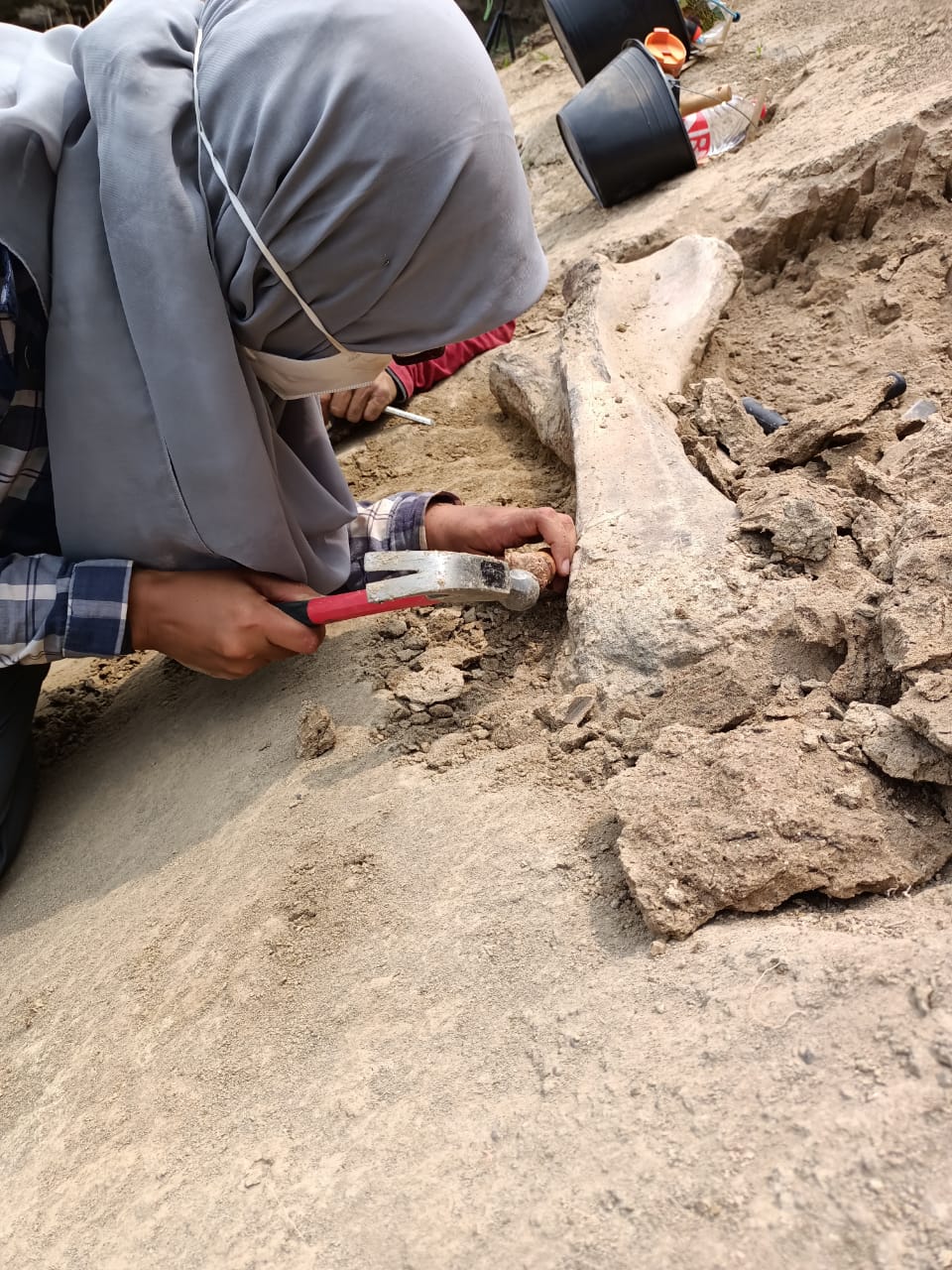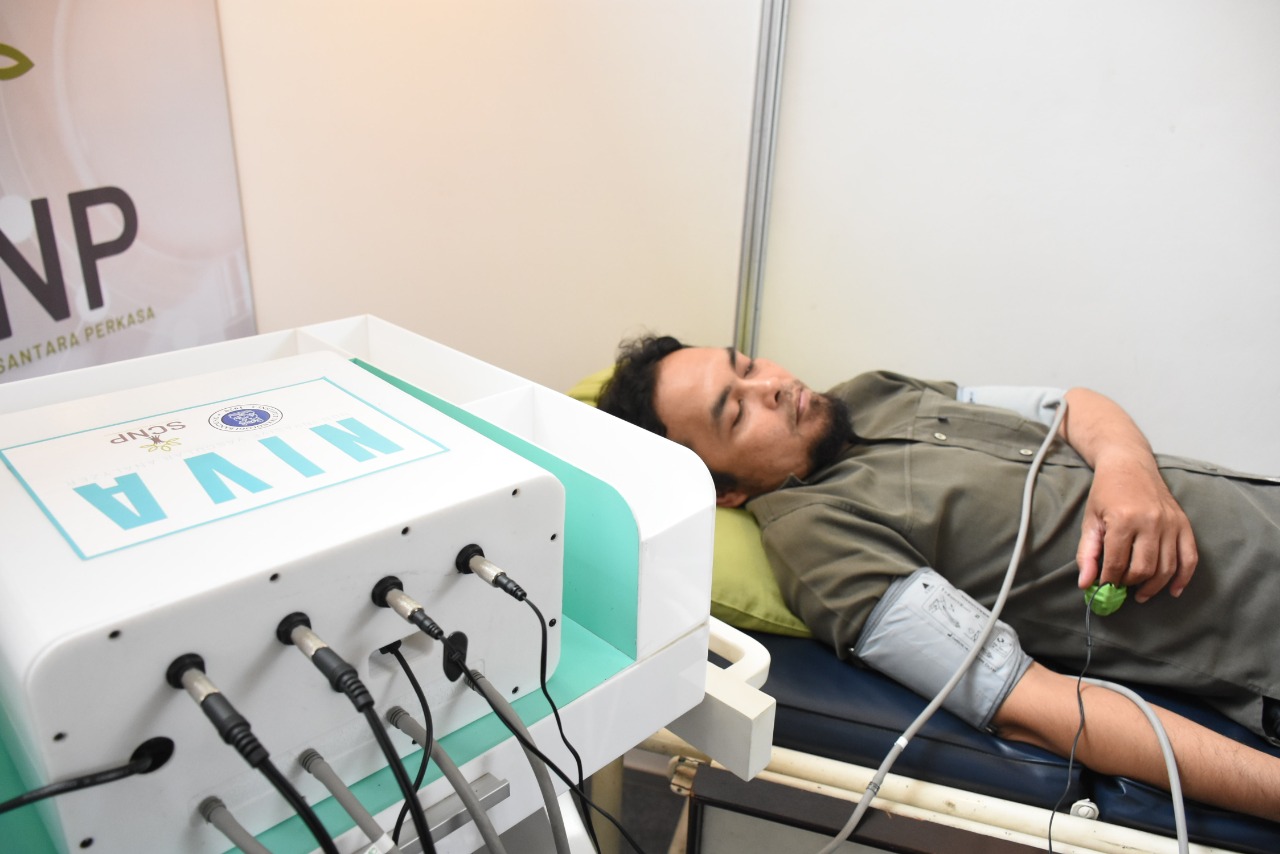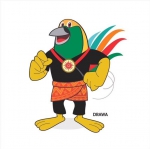ITB Team Found Evidence of Ancient Animals Existence while Examining Fossils in Saguling Reservoir
By Adi Permana
Editor Adi Permana

BANDUNG, itb.ac.id— Recently, fossils have been found on Sirtwo Island, the center of Saguling Reservoir, West Bandung Regency. The discovery that once began by reports from locals was then further examined by the Team from ITB Geological Engineering Study Program.
During the survey activity, the team observed 17 points along Sirtwo Island. The team verifies that the bones found in the rocks along the island were fossils, not modern/ contemporary animals, as concluded by Mika Rizki Puspaningrum, S.Si., M.T, Ph.D. from Paleontology and Quaternary Geology Research Group, Faculty of Earth Sciences and Technology (FEST).
“The fossils found on the surface as well as those that have been exposed are then removed and stored by the authorities at the site. Based on these findings, the team managed to identify the fossils,” she said. Those fossils are identified as the Bovidae (cows, buffalo, and bulls), Cervidae (deer group), and Elephas maximus (elephants).
Mika recount the chronological discovery of the fossil. Around 2020, some locals developed the tourist attraction of Sirtwo Island, the islands around the Saguling Dam, which were used by people to mine sand. There have been several limited tours there. Initially, the activities were only boat tours, taking pictures on the edge of the lake, and going to Sirtwo Tower.
“While exploring the island, Rizky (Indonesian Geotourism Guide activist) got a report from locals named Jahidin about rocks that looked like bones. He then checked it directly and took some photos. The photo was sent to one of the team members, who then took the initiative to check the location to verify it,” she said.

The survey was conducted on two different days, on Sunday, October 10, and on Friday, October 15, 2021, involving Alfend Rudyawan (Geodynamics and Sedimentology Research Group), Astyka Pamumpuni (Applied Geology Research Group), Sukiato Khurniawan (Geology Study Program Lecturer in University of Indonesia, Alumni of ITB Geological Engineering Class 2011), and Alfita Handayani (ITB Geodesy and Geomatics Engineering Lecturer).
The team, in collaboration with the Geological Museum, also excavated the front leg bones of elephants that had opened and were severely damaged. Therefore, the ITB team took the initiative to protect the fossil by wrapping it in a cast to then be removed and further examined.
"In addition to paleontology, the team will also develop research on geological aspects as a whole, including stratigraphic studies, age, and ancient environments," he explained.
A more in-depth review of the fossils and follow-up to the management of the island need to be carried out collaboratively between the ITB team and the residents of Sirtwo Island management, PT Indonesia Power Saguling (as regional manager), TACB KBB, Disparbud KBB, PGWI, Bandung Geological Museum, Cipongkor Subdistrict Government, Indonesian Geotourism Society, and DPC HPI KBB.
Photos: ITB Geological Engineering Study Program Team
Reporter: Adi Permana
Translator: Aghisna Syifa R (Biologi, 2020)

.jpg)
.jpg)
.png)
.jpg)
.jpg)



